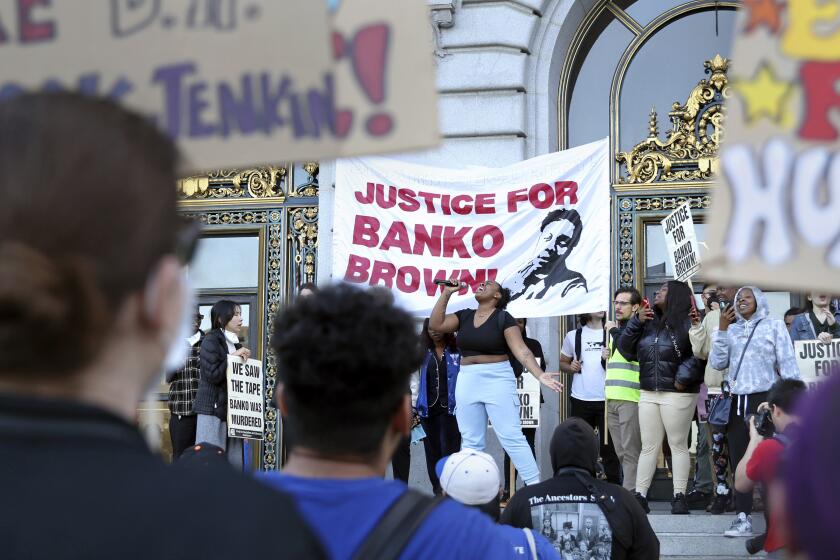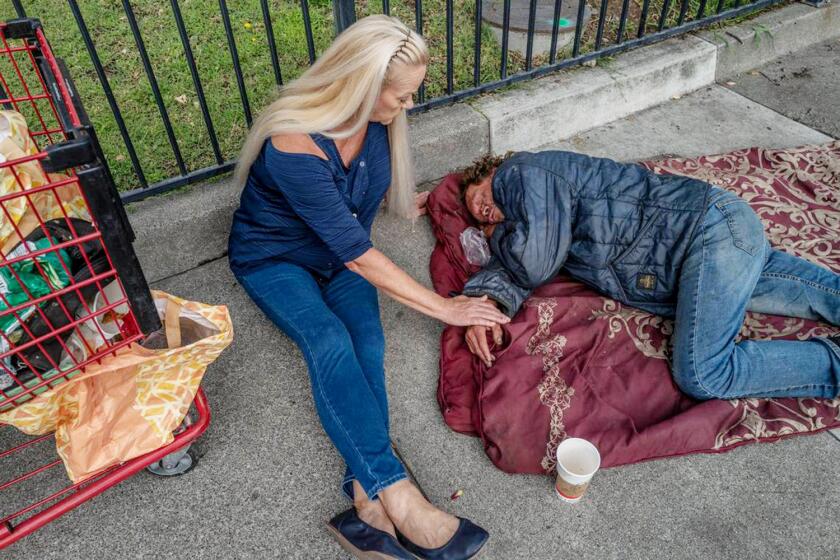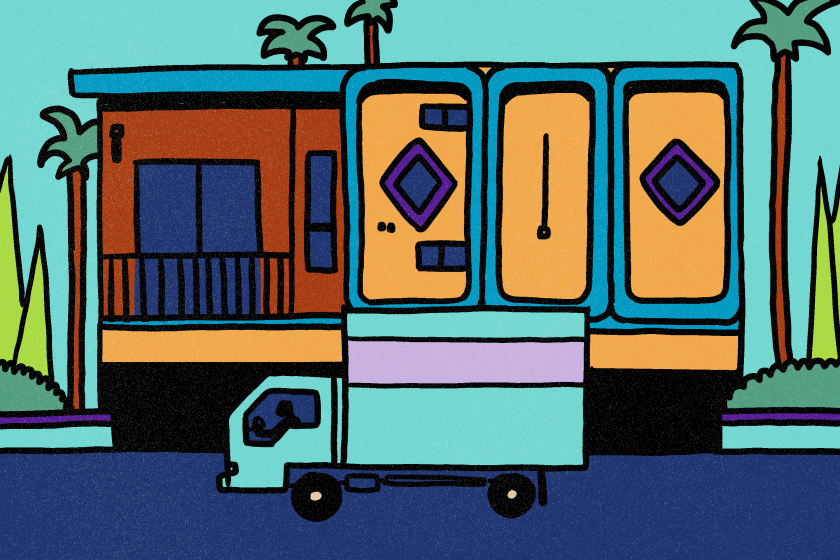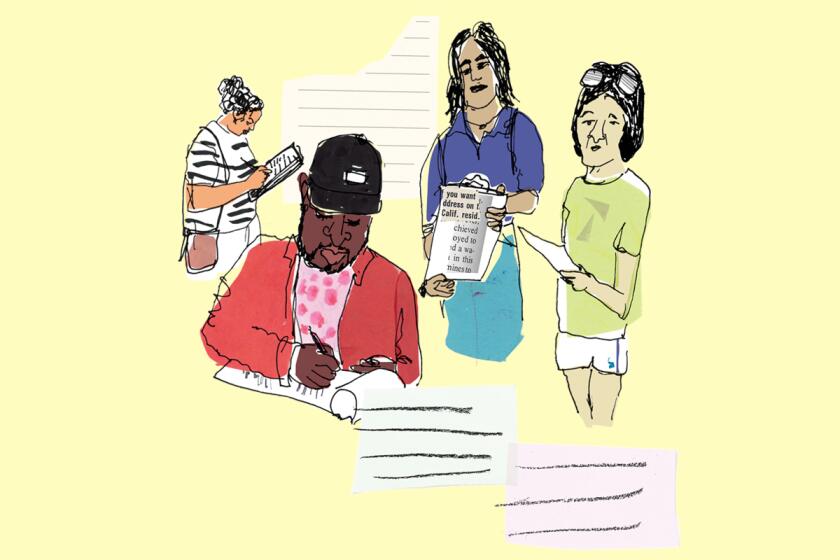The truth about our homelessness crisis: As Californians age, they are priced out
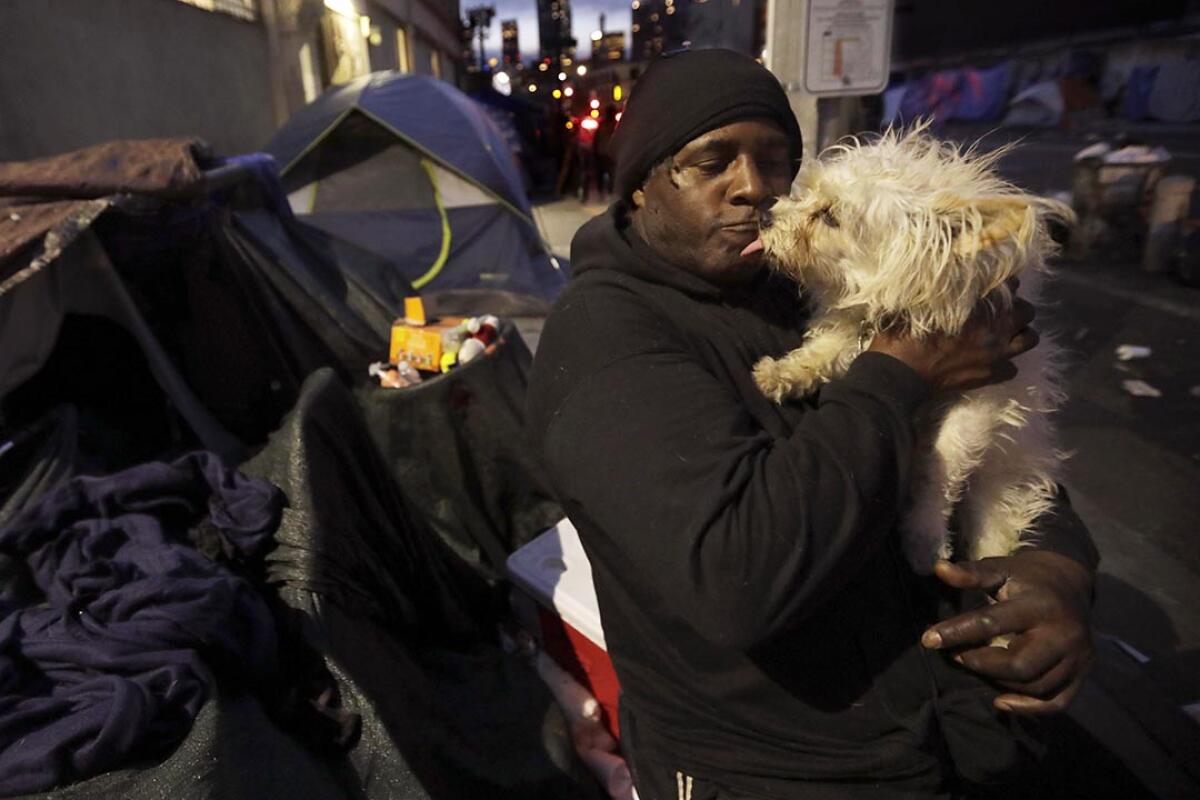
- Share via
Public policy and common perception have long tied the road to homelessness with mental illness and drug addiction.
But a new study out Tuesday — the largest and most comprehensive investigation of California’s homeless population in decades — found another cause is propelling much of the crisis on our streets: the precarious poverty of the working poor, especially Black and brown seniors.
“These are old people losing housing,” Dr. Margot Kushel told me. She’s the lead investigator on the study from UCSF’s Benioff Homelessness and Housing Initiative, done at the request of state health officials.
“They basically were ticking along very poor, and sometime after the age of 50 something happened,” Kushel said. That something — divorce, a loved one dying, an illness, even a cutback in hours on the job — sparked a downward spiral and their lives “just blew up,” as Kushel puts it.
Kushel and her team found that nearly half of single adults living on our streets are over the age of 50. And 7% of all homeless adults, single or in families, are over 65.
And 41% of those older, single Californians had never been homeless — not one day in their lives — before the age of 50.
If that doesn’t kindle at least a bit of fear and empathy in your heart, you’re either a mogul or a trust fund baby who has never struggled to pay the bills. As much as we want to see the average homeless person as a drug tourist dropping into too-progressive cities for the good fentanyl and lax laws, as is the narrative in San Francisco, or someone whose mental illness makes it impossible for them to live unaided, the truth is simpler — and much more devastating: As Californians age, they are being priced out of housing.
We have come to the point of income inequality that if you are older and unable to work, homelessness is a real threat throughout the Golden State. For every 100 extremely low-income people in California, defined as making less than 30% of area median income, there are only 24 units of affordable housing available.
That makes obtaining and keeping permanent housing an ugly game of musical chairs, as the report puts it, in which too many are left standing when the music stops.
“What people need to know is there are professionals on the street,” DeDe Hancock told me. She’s a member of the lived experience advisory council for the study.
“People who are middle income are dropping to low,” Hancock said. “People working every day are living in cars.”
Chabria: Killed for shoplifting snacks and a Sprite: San Francisco, Walgreens and an ugly legacy
A security guard in San Francisco shot Banko Brown, a transgender Black man, exposing how the city’s Black community suffers under the pressures of poverty and racism.
Before becoming homeless in 2006, Hancock, who has a psychology degree from UC San Diego, owned both a home and a rental property. She lost her job as an administrative assistant at a nonprofit after pointing out a financial discrepancy, she said, and filed a wrongful termination complaint.
But losing her job started that spiral that ended up with her losing both her properties. She and her son moved into her mother’s home, but within a few months, her mom died of pancreatic cancer. She ended up losing that property, too, when she couldn’t pay off a loan against it.
One loss leading to the next.
Her 12-year-old son went to live with his football coach, and she began sleeping in a storage unit where she was keeping the remnants of her lost life. But eventually she wound up on the streets, two weeks before Thanksgiving in 2009. She remained homeless for seven years until she was able to apply for early Social Security at age 62.
“The sad thing is that in those seven years, no one ever asked me why or how I became homeless,” Hancock told me.
And like so much of our inequality, race is a big factor — Kushel found that more than a quarter of those surveyed identified as Black, while only 6% of Californians overall are Black. Native Americans are also over-represented in our homeless population.
Those facts are shameful and should change both the narratives we tell ourselves about the 171,000 people homeless in California and how we fix the crisis.
That’s not to say that there isn’t also a crisis of mental illness on our streets, or that substance use isn’t a problem. Mental illness and substance use are clearly troubling pieces of the puzzle, as is the terrible job we do helping people re-establish themselves when they come out of our jails and prisons. The study found 1 in 5 of those interviewed became homeless after being incarcerated.
A bit more than a quarter of the people Kushel’s team interviewed had a mental illness serious enough to require a hospitalization at some point in their lives — a sign of what we all know, that our mental health care system is unconscionably lacking. Which is why initiatives such as CARE Court are critical to providing an alternative path for those with severe mental illness.
CARE Court, California’s plan for helping those with severe mental illness, is under attack by civil rights groups. But families fighting to help their loved ones say compassion demands intervention.
And though Kushel points out that the perception is that most people on the street are using drugs, “it’s not everybody,” she said. Only about a third said they were regular users of meth — the most common drug reported.
But Kushel found that even for people with those other factors, financial instability was the tipping point.
She discovered that many of the older people living on the streets were employed for most of their lives, often in physically demanding jobs such as waitressing, warehouse work or construction. The kind of jobs our economy depends on, where workers are easily replaced and often are.
That was the case for Tony, a homeless man I met last week in Sacramento, who says he ended up in a tent after “a storm of bad luck.” He asked me not to use his last name, but he shared his story. He was born in the San Fernando Valley and went to Sacramento to be with a girlfriend. He had a job in transportation but lost his license over a traffic violation in 2018 that he never cleared up. Then he broke up with the girlfriend and had to move out of her apartment.
“After you lose your job, you lose everything,” he told me, standing under a line of shady sycamore trees on a road that divides a rich neighborhood from one filled with encampments.
“There’s too much money on one side [of the street] and not enough on the other,” he said.
The study used eight counties throughout California, including Los Angeles, to create a snapshot of both rural and urban homelessness — surveying nearly 3,200 people and conducting 365 in-depth interviews. Researchers found that the results held regardless of whether a person was without housing in one of our large cities, or in our less-populated northern and eastern counties.
Kushel and her team also found another myth-dispelling fact: Most of the homeless people on California‘s streets are Californians. While conservative pundits love to scream about lazy homeless people flocking to the state for easy living, “we have to stop these narratives that people are flooding into California,” Kushel said. “It’s not true.”
Kushel found that 9 out of 10 people lost their last housing in California and three-quarters live in the same county as where they most recently had a place to call home.
And a side note: Does compassion require a specific ZIP Code? Most of the money cities and counties are using for housing and homelessness comes from the state and the federal government — not local coffers. Those dollars do not come with where-are-you-really-from strings.
Kushel said her findings should be a wake-up call that while access to substance use treatment and rebuilding the mental health care system are urgent for some of the homeless population, the only solution to homelessness is housing. We have to build not just affordable housing, but housing for extremely low-income folks, she said. And we have to do better at keeping people in the housing they have, through rent subsidies and other direct intervention, when life punches them in the face.
Because as fast as we can pull people out of homelessness, the rent is too high and more and more people can’t pay it. She found in the six months prior to their being homeless, people’s average income was $960.
Affordable housing, such as Section 8 and public housing, is available, but it often requires navigating applications and government agencies. Here’s what you need to know.
So impoverished people need stable housing — which is the starting point L.A. Mayor Karen Bass is using, to her credit. My colleagues Ruben Vives and Doug Smith recently reported that during her first six months in office, Bass has found permanent housing for more than 4,300 people living on the streets and interim housing for thousands more. Her plans may be imperfect, but they have the right goal.
Meanwhile, in San Francisco, Mayor London Breed has initiated a crackdown in the troubled Tenderloin that entails arresting folks for crimes including public intoxication, dragging them into custody for a few hours, then tossing them back on the street. Not a single person detained has accepted offers of treatment so far — unsurprising since incarceration is not a huge trust-builder.
That kind of short-term fix drives people farther into the margins, Kushel warned, making them invisible but no less in need.
The last statistic I will give you is this: Fewer than half of people living on the streets have received formal help obtaining housing. Despite all our efforts, there is a massive disconnect between how much intervention the government perceives it is offering and how much is actually reaching people, Kushel said.
Though the reasons for that are unclear, she said it may be in part because aid is focused on shelters or troubled encampments and misses the quiet, hidden homeless.
That is the case for Ivan Dixon, 53, whom I talked to in an alley in Sacramento. He’s been homeless since his father kicked him out at age 14, he said, living with a group of underground hip-hop dancers until he aged out of that scene.
When I asked him if he wanted housing, he looked at me as if I was stupid.
“Of course I do,” he told me. But he said being homeless means you are “nobody’s friend.” He has not been offered help, he said. But he also tries to avoid people — moving every night to avoid becoming a “target” of both violence and the police.
“That’s just being in the streets,” he told me.
But it’s no life for an old man.
You can help someone get on the path to housing — and make your voice heard on issues of housing and homelessness. Learn how with Shape Your L.A.
- Share via
Watch L.A. Times Today at 7 p.m. on Spectrum News 1 on Channel 1 or live stream on the Spectrum News App. Palos Verdes Peninsula and Orange County viewers can watch on Cox Systems on channel 99.
More to Read
Sign up for Essential California
The most important California stories and recommendations in your inbox every morning.
You may occasionally receive promotional content from the Los Angeles Times.
